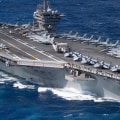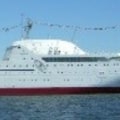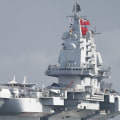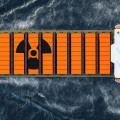The civil nuclear industry was not prepared to support the ship. In addition to fuel economy, nuclear-powered ships go approximately 50% faster than oil ships of the same size. For the shipping industry, the increase in the number of operations per year and the increase in profits seem to more than offset the increased operating costs of nuclear energy, according to an analysis by researchers at Penn State. This brings us to the real issue with nuclear-powered merchant vessels: reactor officers are scarce, and the laws of supply and demand mean they aren't cheap. It takes years for reactor officers to learn their trade, starting with a degree in physics.
Nuclear navies, whether Russian, Chinese, American, French, Indian or British, cling to their reactor officers, fearing that they might decide that running a power plant and coming home to see family every day is better than going to sea. In some of these navies, reactor officers are even lured back with movie star salaries until they reach sixty. Marine nuclear propulsion is the propulsion of a ship or submarine with heat provided by a nuclear reactor. The power plant heats the water to produce steam for a turbine that is used to turn the ship's propeller through a gearbox or through an electrical generator and engine. Nuclear propulsion is mainly used in naval warships, such as nuclear submarines and supercarriers.
A small number of experimental civilian nuclear craft have been built. The easiest fuels for ships are probably powdered metals: they have the space and bunkerage to modernize and powdered metal can easily be mass-converted back into metallic powder, ready to oxidize again from surplus grid energy. Wind and solar energy feel clean, and nuclear energy feel dirty and dangerous, which is unfortunate because people act on emotions rather than facts and reason. Nuclear power, even the rather stupid design that exploded in Chernobyl, causes far less disease and environmental damage than other forms of energy production. In addition to political and safety concerns (realistic or not), problems with maintenance, accident problems (imagine a nuclear-powered vessel sinking in a fishing zone), technology transfer and cost mean that this is not a start. Not much when considering power requirements, but engine warm-up will decrease, so you may be able to make the engine much smaller in comparison, which will be important in things like a car, submarine, or warhead. On container ships however, the size and weight of the electric motor it's not really a problem like they are today. People are going to be as interested in the unmanned nuclear merchant ship as they are in the unmanned civil aircraft.
Both the United States and Russia have nuclear reactors that have fallen to the bottom of the ocean without harmful effects and have been there for many decades. Obviously, they should fully adopt the protocols and procedures of the Nuclear Navy which have worked so well for so long; there is no reason to reinvent the wheel. The following are ships that are or were in commercial or civil use and have nuclear marine propulsion. Or put more simply, assuming a random shipping time of three weeks for a container ship from China to the U. S., a 50% speed increase would reduce that time by a full week.
The International Maritime Organization (IMO) is considering a range of long-term carbonless fuel solutions such as ammonia and hydrogen; however it is nuclear power that holds the most promise in terms of fuel cost and efficiency. The Soviet icebreaker Lenin was the world's first nuclear-powered surface vessel in 1959 and remained in service for 30 years (new reactors were installed in 1970). Admiral Rickover was responsible for designing, developing and producing marine nuclear propulsion plants beginning in 1940s in America. Instead of building-sized diesel engines on container ships such as Wärtsilä RT-Flex96c (13.5 meters high and 26.5 meters long), a reactor together with a steam turbine could replace them. In conclusion, while there are many factors preventing cargo ships from being powered by nuclear energy such as political concerns, safety issues, maintenance problems and cost; it still holds great potential for fuel efficiency and cost savings. The protocols and procedures of Nuclear Navy should be adopted for any future endeavors involving nuclear powered vessels.



